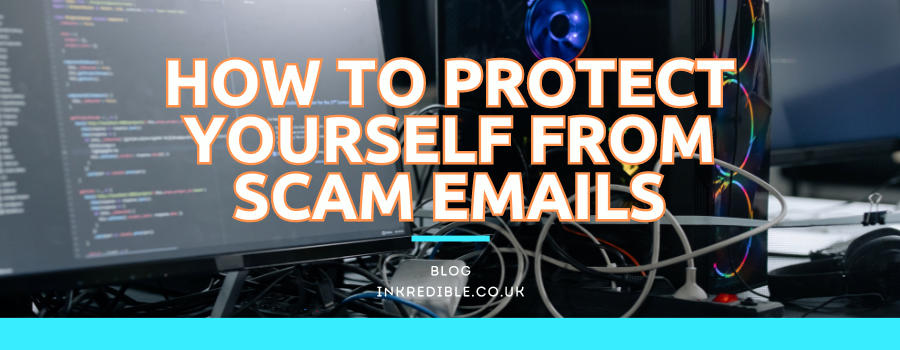Protect Yourself From Fraud
Email scams have become increasingly sophisticated and prevalent. One of the most common types of email scams involves fraudsters posing as reputable organisations to deceive individuals into sharing sensitive information or making financial transactions.
One such scam that has gained notoriety is the Royal Mail scam, where cybercriminals impersonate Royal Mail and request extra payment. In this blog post, we'll shed some light on this scam and provide you with tips to protect yourself from falling victim to it.
The Royal Mail Scam: How It Works
The Royal Mail scam typically starts with an email that appears to be from Royal Mail, a trusted UK postal service. These emails often use convincing branding and logos to make them appear legitimate. The content of the email usually includes a message claiming that there is a package waiting for you, but it cannot be delivered until an extra fee is paid.
Here are some common elements you might find in these scam emails:
Urgent Language:
Scammers use urgency and pressure to manipulate victims. They may state that your parcel will be returned to the sender or destroyed if you don't pay immediately.
Request for Payment:
The email will instruct you to click on a link to make the supposed payment. This link often leads to a fake website designed to collect your financial information.
Suspicious Email Addresses:
Check the sender's email address carefully. Scammers often use email addresses that resemble the genuine Royal Mail domain but have slight variations, such as including hyphens, underscores or mis-spellings.
How to Protect Yourself from Royal Mail Scams
Protecting yourself from Royal Mail scams and similar email fraud is crucial. Here are some steps you can take to stay safe:
Be Skeptical:
Always be cautious when receiving unsolicited emails, especially those requesting personal or financial information. Be wary of emails that create a sense of urgency.
Verify the Sender:
Check the sender's email address closely. Royal Mail emails will typically come from "@royalmail.com." If it looks suspicious, don't open the email or click on any links.
Avoid Clicking on Links:
Never click on links or download attachments from unknown or unverified sources. Instead, visit the official Royal Mail website directly by typing the URL into your browser. You can also hover over links in emails and the target URL or website address should appear, usually in the bottom left corner of your browser window. Use this to check where the link would have taken you, instead of clicking it.
Use Strong Passwords:
Ensure your email account and online banking accounts have strong, unique passwords. Consider using a reputable password manager to keep track of your credentials securely, especially if this helps you use different passwords for each login you use.
Enable Two-Factor Authentication (2FA):
Whenever possible, enable 2FA for your email and financial accounts. This adds an extra layer of security. Usually this will be in the form of a second form of verification through your mobile number or a mobile authentication app such as Google or Microsoft Authenticator.
Report Suspicious Emails:
If you receive a suspicious email, report it to your email provider and to Action Fraud in the UK (or the equivalent agency in your country).
Educate Yourself and Others
Share information about email scams with friends and family to help protect them from falling victim to similar scams.
Overview
Scammers continually evolve their tactics to deceive unsuspecting individuals, but by staying informed and vigilant, you can protect yourself from falling victim to Royal Mail and similar email scams. Remember that legitimate organisations like Royal Mail will never ask for payment via email without proper documentation and due process.
Always verify the authenticity of emails before taking any action and report suspicious activity promptly. Your online safety and financial security should always be a top priority. Look out for scam emails imitating other companies such as Paypal, Banking Organisations and Government portals such as HMRC or DVLA.

